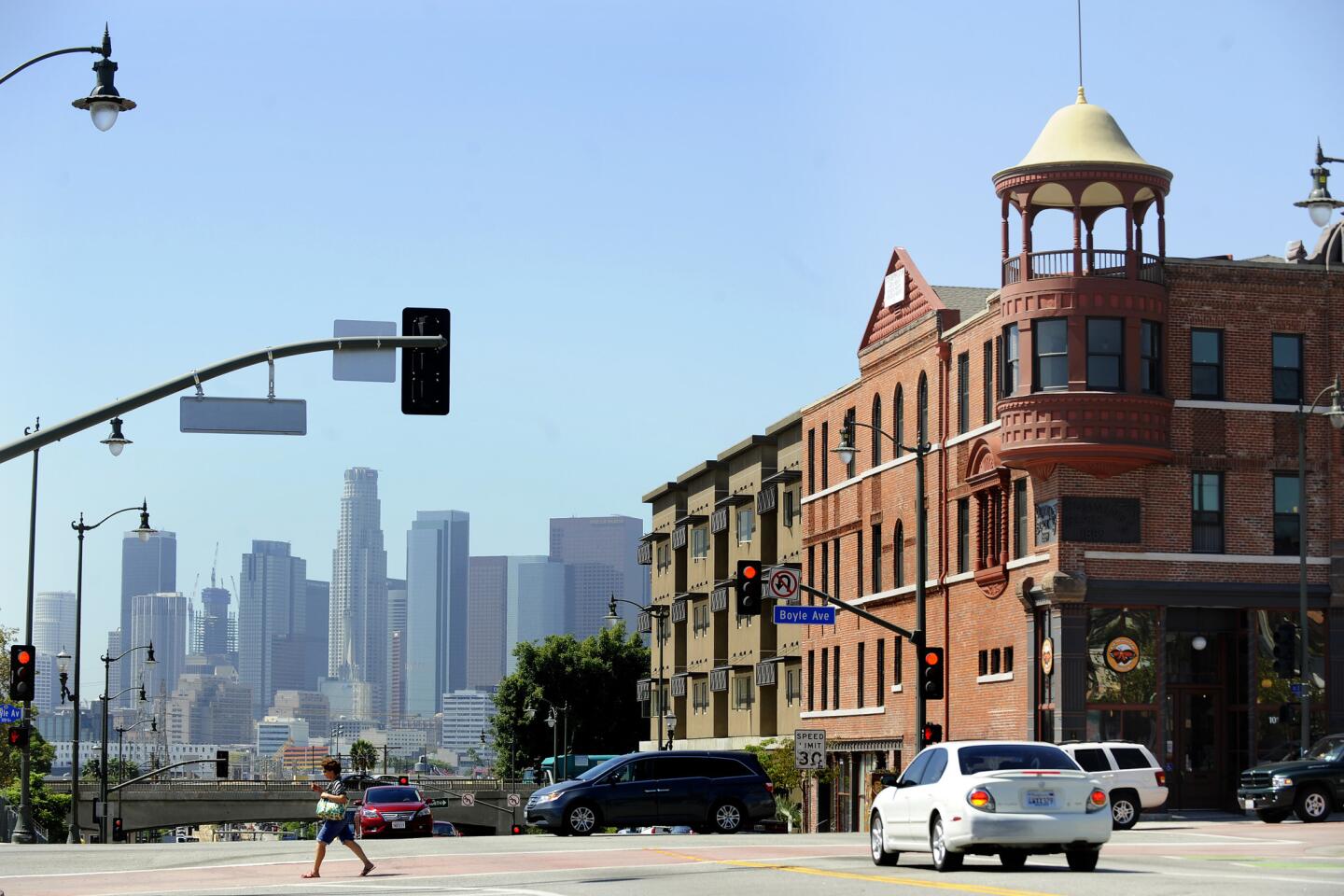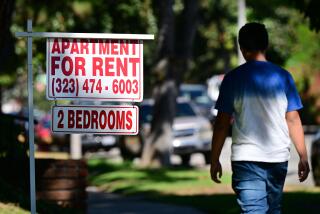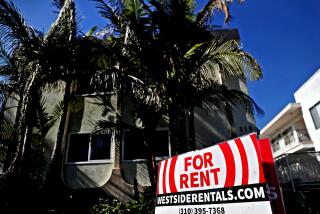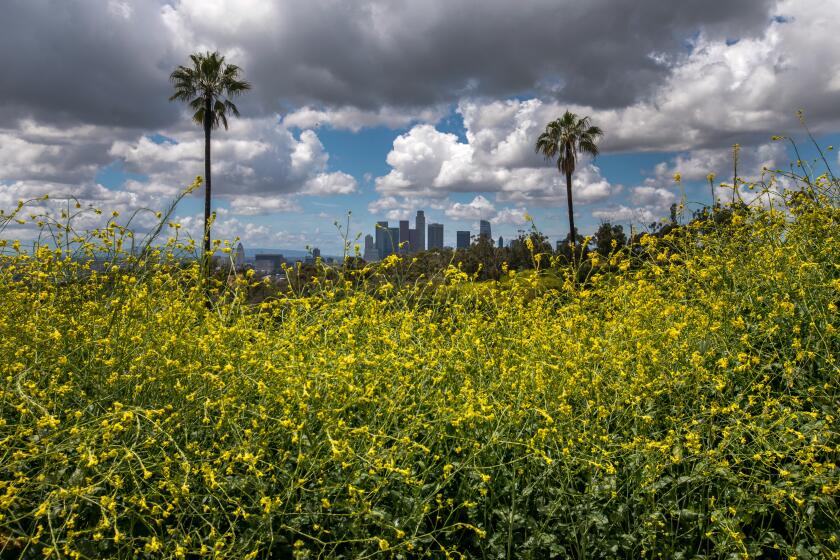Opinion: A Manhattan studio costs <i>how much</i>? What your L.A. money could buy in New York
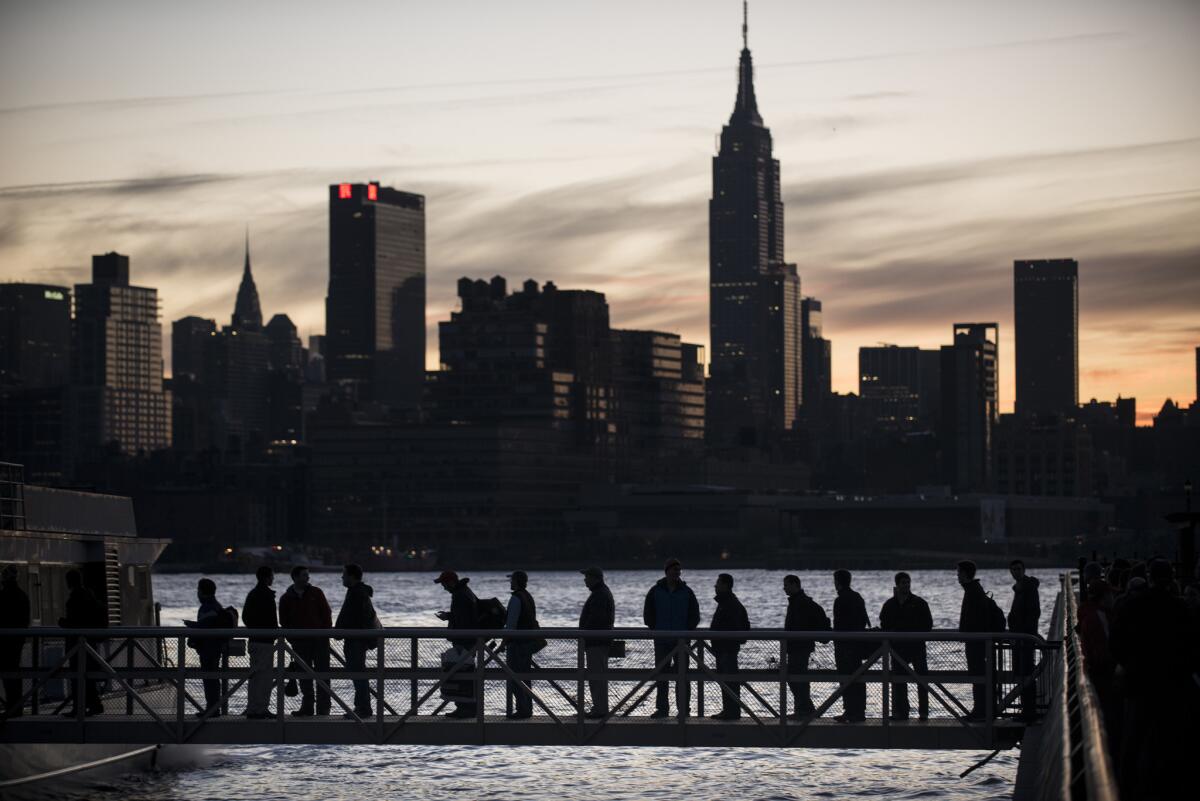
People board a ferry with the Manhattan skyline in the background.
Angelenos spend a larger share of their paychecks on shelter than the residents of any other city: Renters, in the aggregate, spend about 48% of their median income, while owners spend about 43%. The greater Los Angeles metro area is the least affordable rental market in the country, and it’s tied with San Francisco for the least affordable sales market.
These general, big-picture figures are useful for housing activists, urban planners and anyone who needs data to back up the suspicion that Los Angeles is an expensive place to call home. But they aren’t that useful if you’re wondering what your money could buy you in Los Angeles versus some other place. As more and more people go freelance, salaries are increasingly portable and so, of course, are savings.
I thought it would be illuminating to compare sales figures at a granular level between Los Angeles and another big city; I chose New York because there are so many New York transplants in L.A., and vice versa. It’s probably not terribly surprising that while Los Angeles may now be less affordable than New York — relative to what the residents of each of these cities get paid — it’s still cheaper in an absolute sense.
All the figures below are culled from Redfin, PropertyShark and Zillow. They’re from 2014. And a caveat: Real estate numbers are inherently messy and often poorly suited to sweeping generalizations. In small neighborhoods, a few large sales can skew figures upward, and new development pricing can diverge wildly from existing house prices in the same market.
Let’s start at the top. Santa Monica’s North of Montana neighborhood had the highest median sales price in Los Angeles, at $3.1 million, comparable to New York City’s Tribeca at $3.3 million. For context, Tribeca is in lower Manhattan, where residents can walk to work as well as the shopping and dining of some of the most picturesque neighborhoods in the city close to Wall Street and City Hall. In L.A., Hidden Hills, Holmby Hills and Brentwood were close behind, with a median sales prices of $2.5 million to $2.97 million, similar to that of SoHo, another lower Manhattan neighborhood.
But median sales prices don’t tell the whole story. North of Montana costs $997 per square foot, while Tribeca averaged $2,338 a square foot. Similarly, Hidden Hills was $503 per square foot, while SoHo was $2,385.
So conventional wisdom is right: In Los Angeles, you get much more space for your money. While $2.7 million buys a 5,300-square-foot mansion in Hidden Hills, it gets you a compact, 1,100-square-foot two-bedroom apartment in SoHo.
On a per-square-foot basis, many of L.A.’s iconic neighborhoods are priced far more reasonably than their New York counterparts. Santa Monica ($997/square foot) and Beverly Hills and Bel-Air (both $941) are less than half the price per square foot of Greenwich Village ($2,576), Gramercy Park ($2,424) or Tribeca ($2,338).
While Los Angeles may now be less affordable than New York — relative to what the residents of each of these cities get paid — it’s still cheaper in an absolute sense.
While $2.4 million buys a large house in Santa Monica, it would get you only a 900-square-foot apartment in Greenwich Village. And a $1.5-million house in Beverly Hills translates to a 642-square-foot apartment in Tribeca.
What if you wanted the same amount of space for the same amount of money?
At $503 per square foot, residences in Hidden Hills are priced comparably to Brooklyn’s Sunset Park ($538), a mostly Mexican and Chinese neighborhood with good transit options. At $941 per square foot, Bel-Air is similar to Roosevelt Island ($940) or East Harlem ($963), both emerging neighborhoods without anywhere near the same cachet as Bel-Air. There has never been, and probably never will be, a Fresh Prince of Roosevelt Island.
North of Montana is one of the few upscale Los Angeles neighborhoods that’s actually a worse deal than equally fancy parts of New York. The 90402 ZIP Code (roughly the waterfront to 26th Street, between Rustic Canyon and Montana Avenue) had an average list price of $1,455 per square foot — more expensive than Brooklyn Heights ($1,236) or the Upper East Side ($1,300). By moving from North of Montana to Brooklyn Heights or the Upper East Side, you could get an extra bedroom, or even a whole extra floor, for the same price. And both neighborhoods are a modest 20-minute commute to midtown Manhattan on public transit. No gridlock like there is Santa Monica.
Let’s move down the pricing chart, from the absolutely insane to the merely ridiculous:
Malibu ($905/square foot) and Pacific Palisades ($900) are better deals space-wise than Park Slope ($999). You could trade a $3-million beach house in the former for a Victorian row house in the latter, which is known for its good public schools and access to Prospect Park.
More surprisingly, Malibu and Beverly Hills are more affordable than Brooklyn’s Gowanus ($1,047) — a formerly industrial area that contains one of the most polluted bodies of water in the United States. The 1.8-mile-long Gowanus Canal is a Superfund site with toxic sludge up to 18 feet deep that has tested positive for both gonorrhea and radioactivity.
Eagle Rock ($453/square foot), Echo Park ($461) and Silver Lake ($507) are priced comparably to Bushwick ($427), the Brooklyn neighborhood made famous on Lena Dunham’s “Girls.” That’s fitting: They’re all hipster magnets.
Among the more affordable neighborhoods, Van Nuys ($327/square foot) is priced equivalently to Jackson Heights ($319) in Queens, a charming immigrant neighborhood with plentiful Indian restaurants that’s about 30 minutes on the subway from midtown Manhattan. You could move from Northridge ($279/square foot) to City Island ($274) in the Bronx, a picturesque island full of bungalows and Victorian houses that looks like a New England fishing village. The big drawback is that it would take about an hour’s drive to get to midtown.
Or, you could move from Watts ($212/square foot) to several neighborhoods in New York City for about the same amount of space and the same amount of money, including Stapleton in Staten Island ($198) — a struggling area close to the Staten Island Ferry — or Brownsville in Brooklyn ($242), which is mostly dominated by public housing. A 1,500-square-foot apartment in any of these places would be priced almost identically.
Housing is, obviously, just one of several factors in the affordability of a given city; and it’s just one of many considerations for someone mulling over a move. But at least now you have a better sense of what your surroundings might look like if you exchanged one metropolis for another.
Constantine Valhouli is the co-founder of NeighborhoodX, a soon-to-launch site that explores cities at the neighborhood level. Follow NeighborhoodX on Facebook or Constantine on Twitter at @c_valhouli.
Follow the Opinion section on Twitter @latimesopinion and Facebook
More to Read
A cure for the common opinion
Get thought-provoking perspectives with our weekly newsletter.
You may occasionally receive promotional content from the Los Angeles Times.

